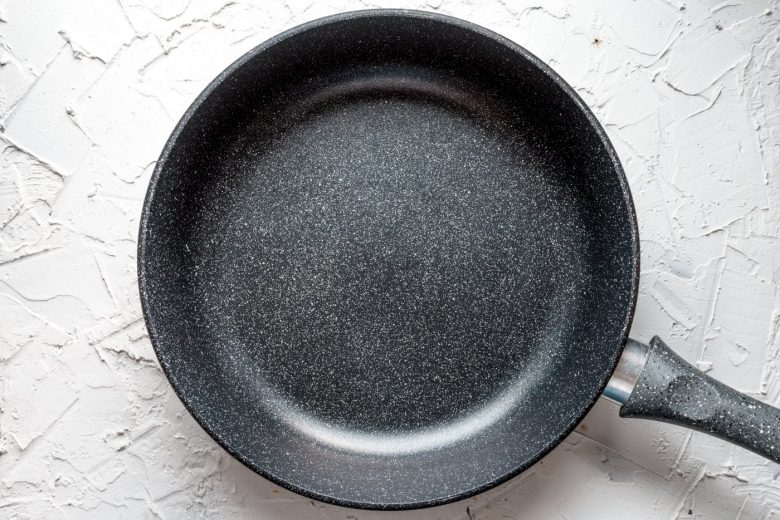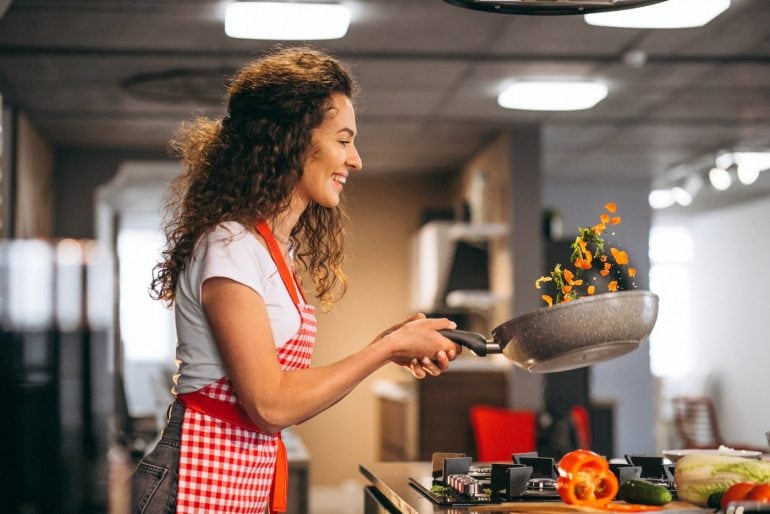Teflon is an amazing thing. These days, it’s found everywhere from your frying pans to the motor oil in your car.
It’s fascinating how the same product can keep your engine from wearing out, and let you clean up those eggs you managed to burn, without resorting to a pressure washer and an industrial-strength steel brush.
Naturally, you would think any surface you can prepare food on would be safe, and you’d be right in this case — for the most part. Like almost any object or substance, however, improper use of a Teflon coated pan can cause some problems.
Teflon is actually a DuPont brand name — the substance is generically referred to as polytetrafluoroethylene, or PTFE — however, for simplicity’s sake, we’ll simply refer to it as Teflon.
Using teflon cookware safely
When used properly, a Teflon-coated pan is considered to be safe. However, once a Teflon pan passes 500 degrees F, the coating will begin to deteriorate, and significant decomposition will begin above 660 degrees F. In brief: Never use it in your broiler, and watch the heat.
When this happens, the carbon-carbon bonds of Teflon break, generating free radicals — which can then go on to form alkenes or react with oxygen to form carboxylic acids.
These resulting particulates, in large quantities, can result in a condition in humans called “polymer fume fever,” colloquially known as “Teflon flu.”
Symptoms present rather like a case of the flu: chills, headache, fever, chest tightness and mild cough, usually occurring about 4-8 hours after exposure. While severe exposure can cause acute lung injury, usually the symptoms resolve on their own within a week to ten days.
Our feathered friends, however, are not so lucky — birds are particularly susceptible to Teflon poisoning, and death from an overheated Teflon coated pan can result for parrots, parakeets, cockatiels, and other pet birds in just minutes.
Ways to minimize the problem
You don’t have to run out and buy all new cookware. Common sense goes a long way here:
- Don’t heat Teflon pans on the stove with nothing in them (not even for a little bit).
- Don’t leave Teflon pans on the stove unattended.
These are the two main causes of Teflon outgassing/decomposition. And really, you shouldn’t be leaving any pan unattended.

DuPont points out, quite correctly, that most fats, butter, and cooking oils will start to smoke and scorch at 400 degrees F, a full 100 degrees F before the Teflon begins to break down. So in short, normal cooking situations should present no danger to humans.
If you have birds in the house, you probably should be a little more careful. Some vets recommend eliminating all Teflon cookware from the house, although most consider that a rather drastic step.
Again, being responsible, using common sense, and monitoring all non-stick cookware on the stove is the best policy for both birds and humans. Do also make sure your birds aren’t directly in the kitchen and that your kitchen is well-ventilated.
Do, however, toss out a Teflon-coated pan if the coating has been damaged — a scratched-up pan is much more likely to release fumes and particulates into the air, not to mention little bits of it into your food itself. Just throw it away and get a new one — don’t donate it somewhere — and remember to only use silicone, plastic or wooden utensils when cooking with non-stick surfaces.
Be smart and be safe
With reasonable, commonsense precautions, Teflon cookware is perfectly safe to use in the household, for humans, and also for birds if care is taken in its use.
Having said that, if your non-stick pans are scratched, toss ’em out — and if you’re just not comfortable using them around your feathery friend(s), by all means, stick to regular iron/copper/stainless stuff without the Teflon.
Some brands, like t-Fal, who were among the first to market Teflon-coated frying pans in the early 1960s, named their brand after TEFlon and ALuminum. They now sell cookware it markets simply as “Nonstick Inside and Out,” with no mention of Teflon at all.
A brief history of Teflon
Like many inventions that are now part of our daily lives, Teflon was discovered rather by accident. In 1938, a chemist by the name of Roy Plunkett, working for Kinetic Chemicals (a joint venture between DuPont and General Motors) was attempting to make a new type of refrigerant.
At one point, the gas in the pressure bottle stopped flowing before the weight of the bottle indicated it was empty, so Plunkett cut the bottle open to find a slippery, white waxy material inside the bottle. This fluorinated plastic was patented in 1941, and the Teflon trademark registered in 1945.
From there, the rest is, well, history. Teflon immediately found hundreds of industrial applications, and in 1961, a Kansas City industrialist by the name of Marion Trozzolo put the first of many Teflon-coated frying pans — the Happy Pan — on the market in 1961.








